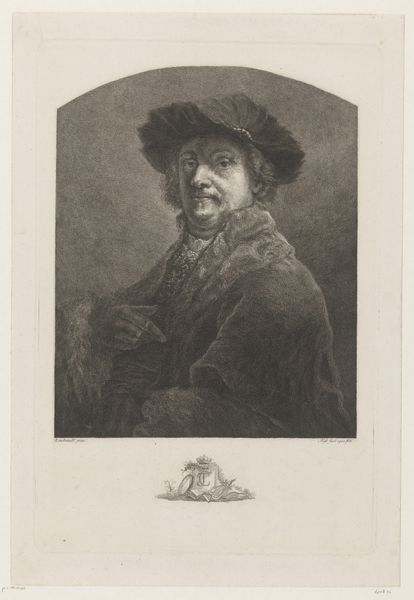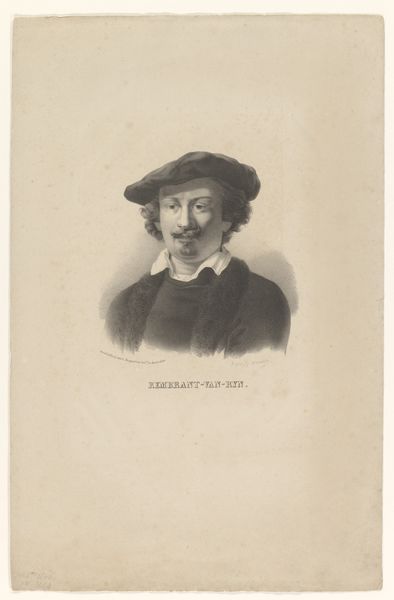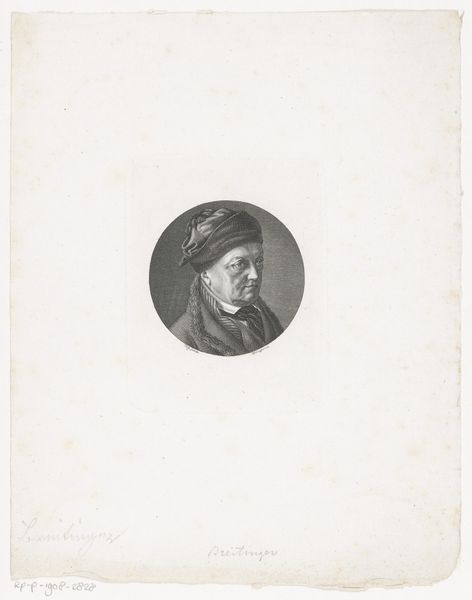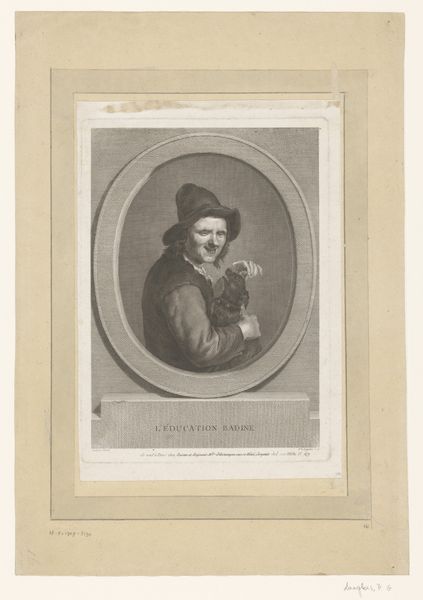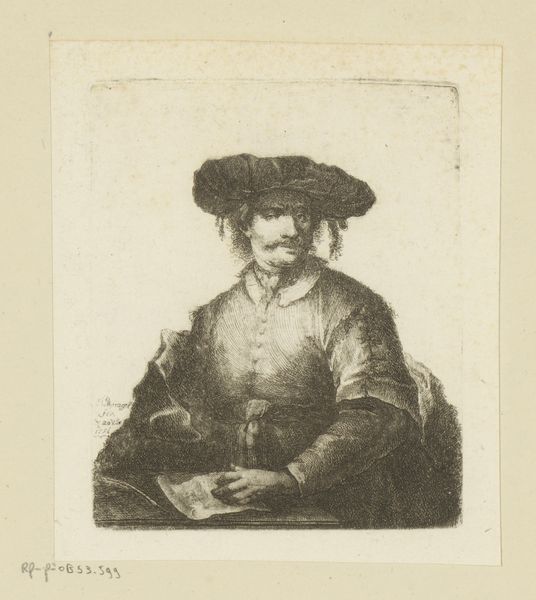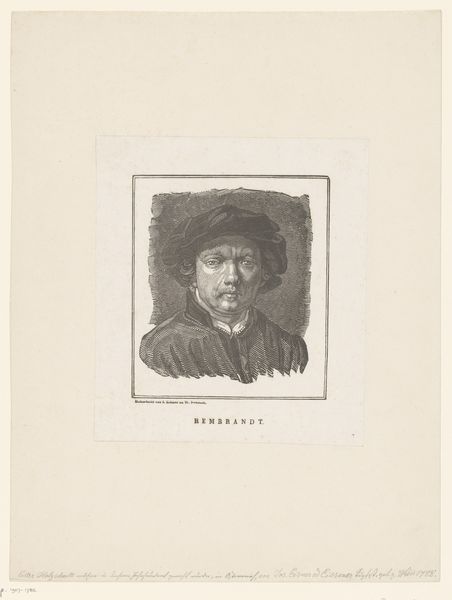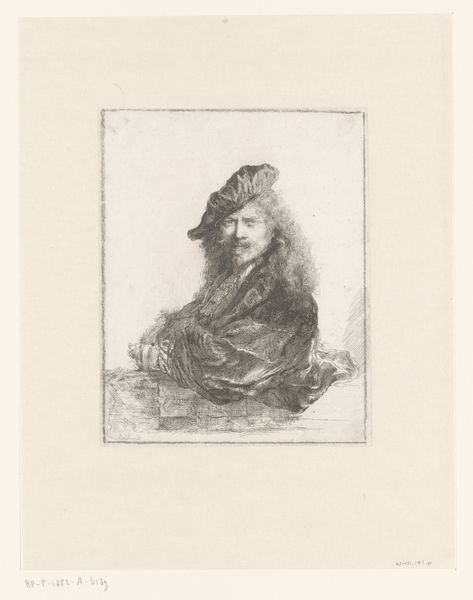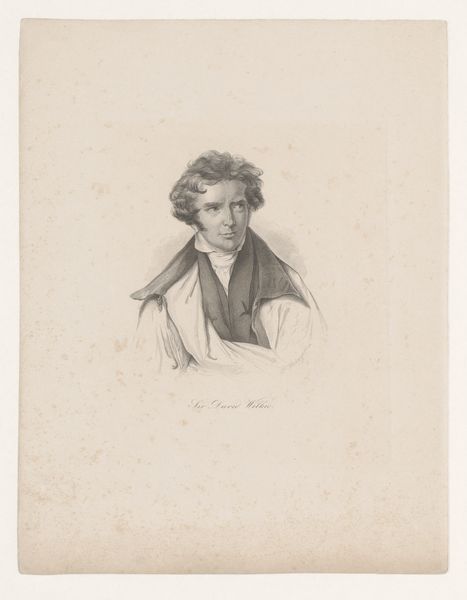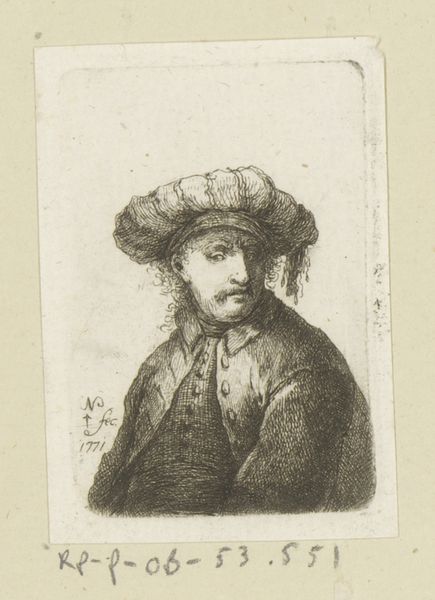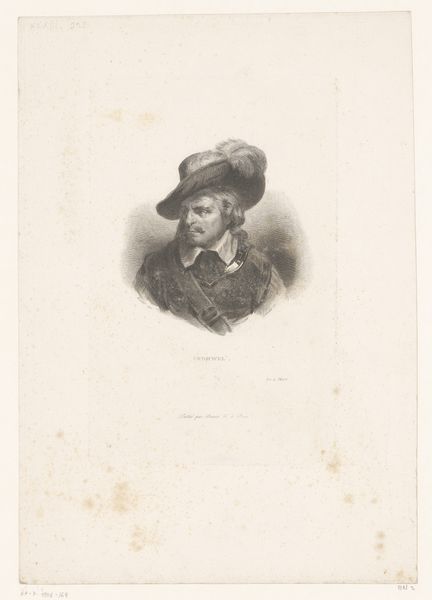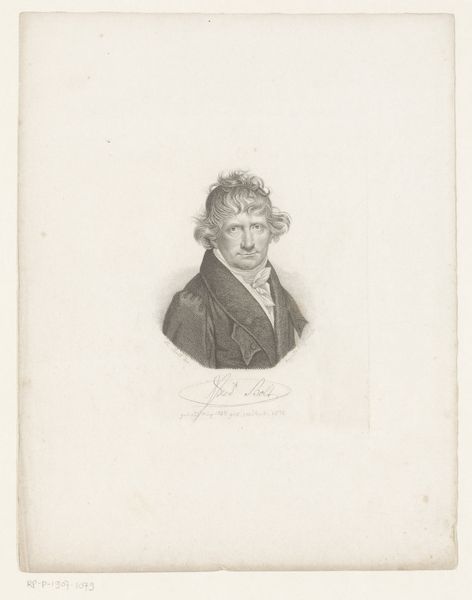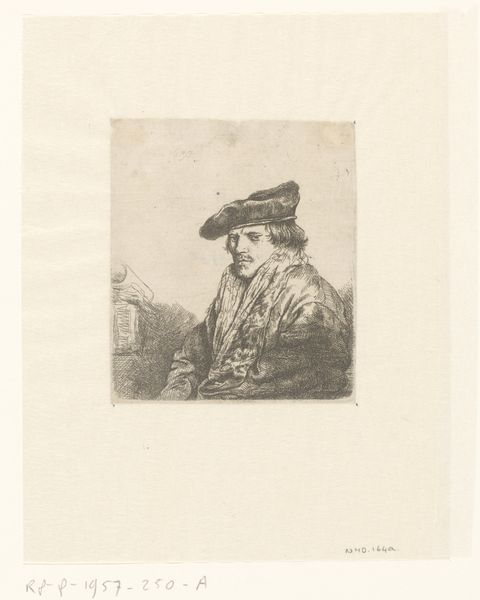
print, etching, engraving
#
portrait
#
neoclacissism
# print
#
etching
#
charcoal drawing
#
history-painting
#
engraving
Dimensions: height 128 mm, width 101 mm
Copyright: Rijks Museum: Open Domain
Johann Friedrich Morgenstern created this etching, "Portret van Rembrandt Harmensz. van Rijn," in 1796. This work gives us a window into how the artistic establishment of late 18th-century Europe, in this case Germany, viewed its artistic forebears. The image recreates Rembrandt in a way that would have appealed to contemporary tastes. Consider the vogue for Romanticism, with its emphasis on individual genius and the artist as a tortured soul. Rembrandt's persona, already legendary, was ripe for such romanticising. Morgenstern uses visual cues like the dark palette and Rembrandt's melancholic gaze to evoke this image. To fully grasp the meaning here, we can consult period biographies, art criticism, and institutional records. These resources help us understand the artistic values and social forces that shaped Morgenstern's interpretation of Rembrandt. Ultimately, art's meaning is not fixed, but rather a product of its historical and institutional context.
Comments
No comments
Be the first to comment and join the conversation on the ultimate creative platform.
